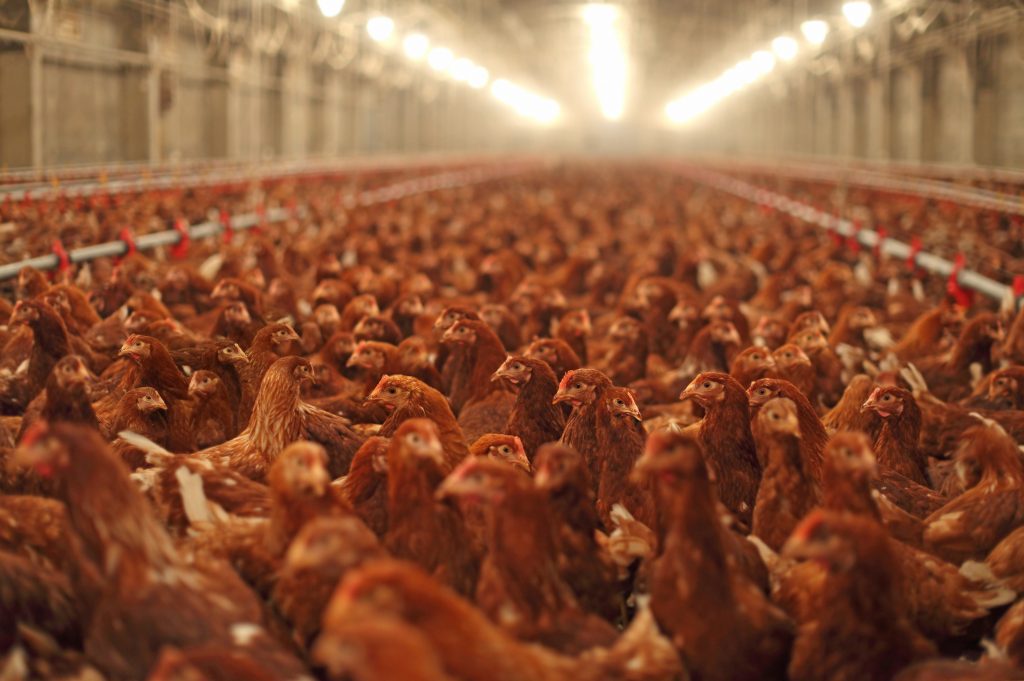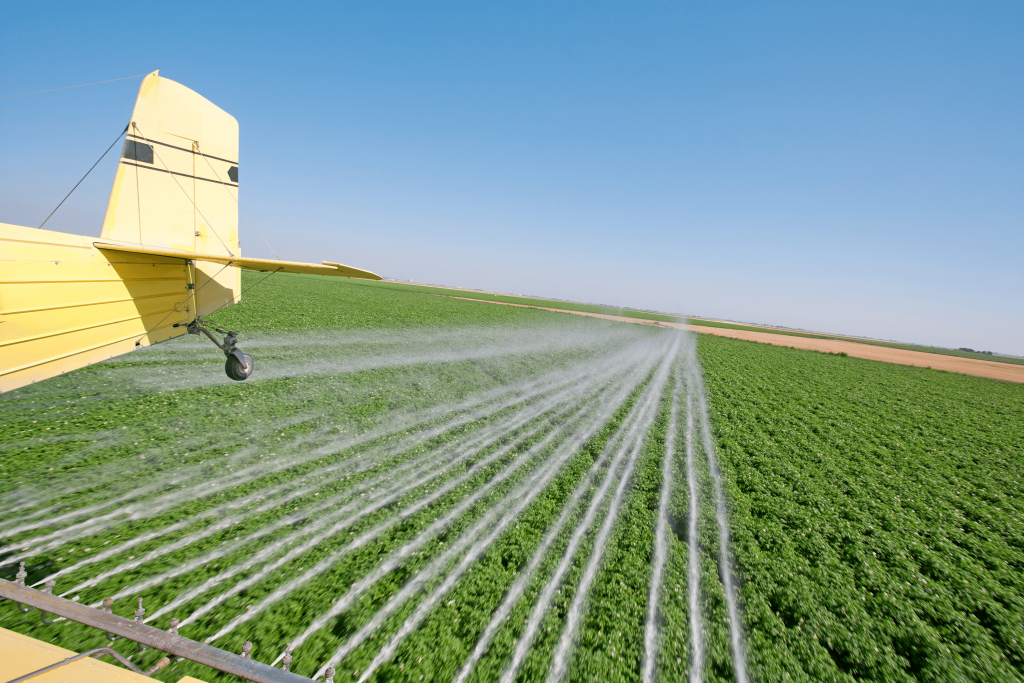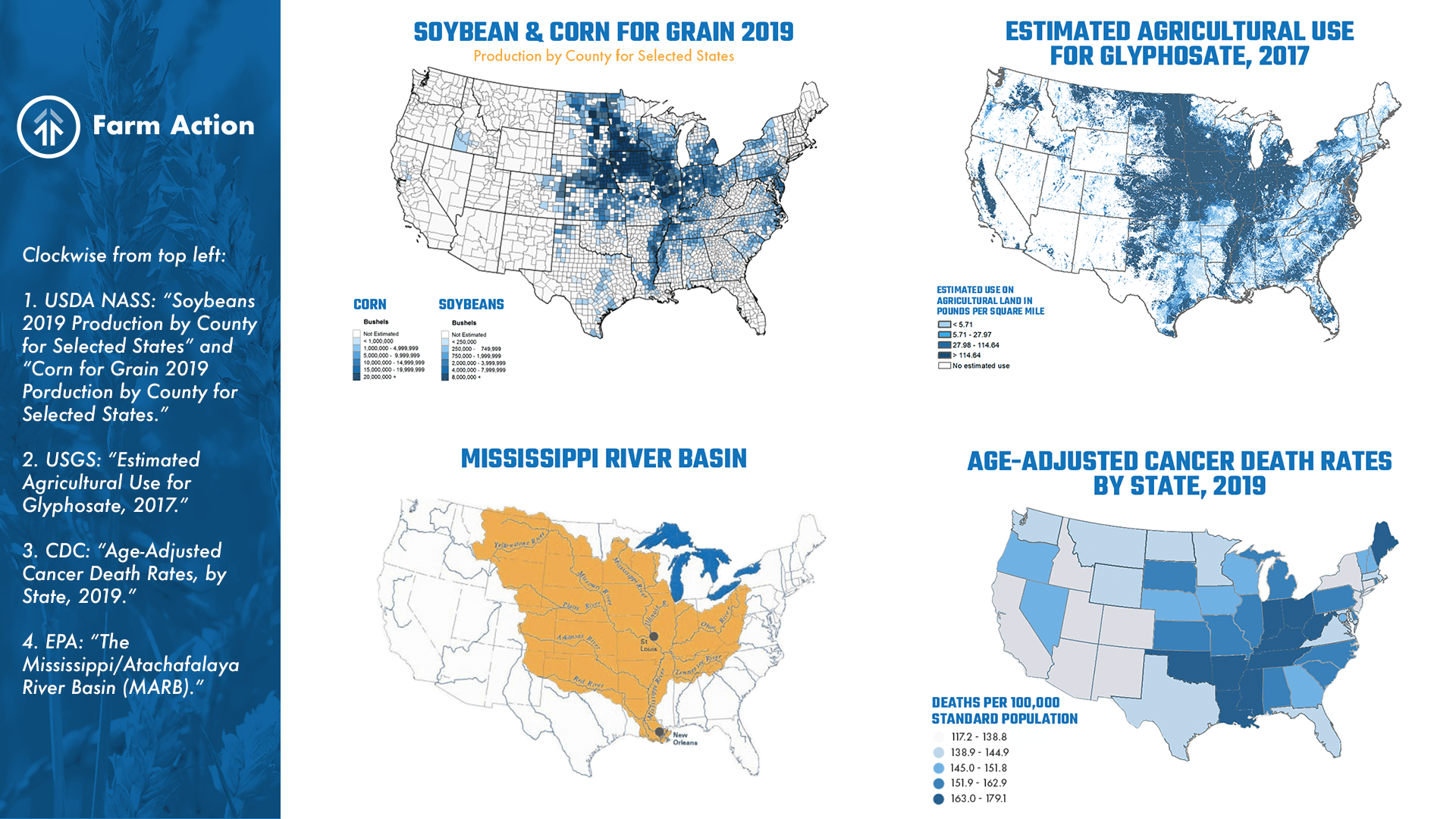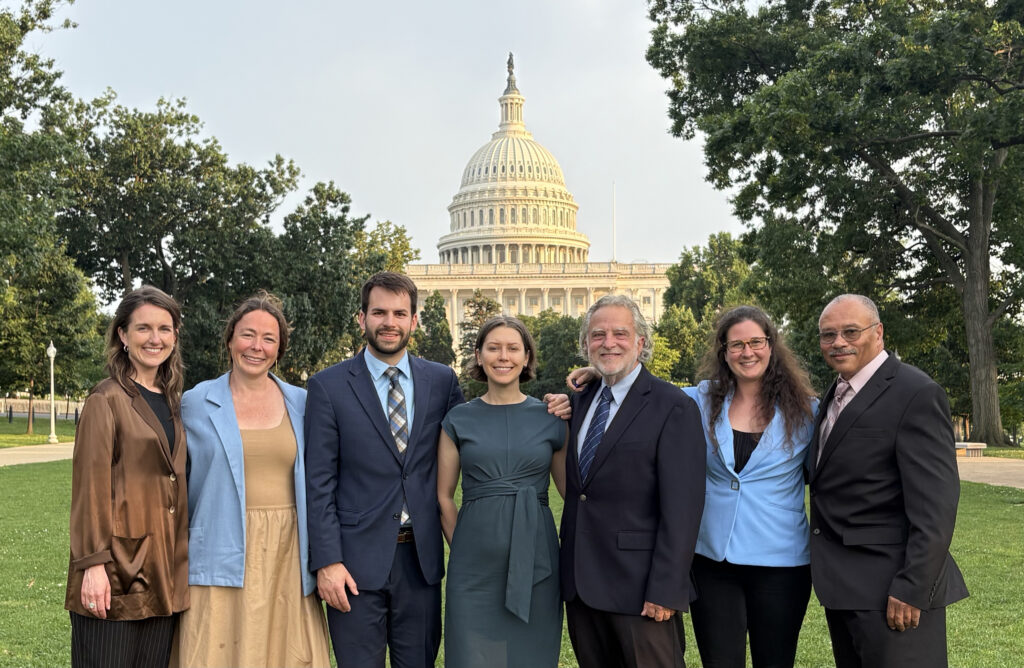We're dispelling the myths of industrial agriculture.
Welcome to our Big Ag Mythbusters blog series! We are here to debunk the tall tales that multinational agrifood corporations use to defend their business model and defeat any meaningful reforms. We’re publishing this series alongside our groundbreaking report titled “The Truth About Industrial Agriculture: A Fragile System Propped up by Myths and Hidden Costs.”
MYTH
Industrial agriculture poses no significant risks to public health.
The Truth
The consolidated, industrial, vertically-integrated agrifood model is widely touted as the only way to feed a growing population, and it receives the bulk of government subsidies for the supposedly cheap food it produces.
The truth is, in order for the industrial agriculture model to produce such vast quantities of food and still make a profit, this system relies heavily on extractive, mechanized, and industrialized practices including the intensive confinement of farm animals (CAFOs) and the use of chemical pesticides, herbicides, and synthetic fertilizers. All of these pose significant and well-documented risks to human health.
The consolidated, industrial, vertically-integrated agrifood model receives the bulk of government subsidies.
How do Big Ag corporations get away with this? In a word: money. They use well-funded marketing campaigns to downplay the risks, and when this doesn’t work, they send fleets of corporate lobbyists to push for policies that allow these obviously-harmful practices to continue.
The Dark Side of Herbicides
When they were first introduced, herbicides were a game-changer for farmers. Suddenly it seemed possible to put expensive hours of labor in weed-choked fields firmly in the past. But some weeds and pests survived these chemicals, reproduced, and grew more resistant, obliging farmers to buy and spray ever more herbicides. Decades later, farmers have spent hundreds of billions on agricultural chemicals — only to have a plague of superweeds with no chemical strong enough to conquer them.
Roundup’s manufacturer (originally Monsanto, now Bayer) spent decades convincing the public that their weed-killing chemical was perfectly safe — in small doses, of course, and as long as you follow the label instructions. Glyphosate, the active ingredient, works by blocking a specific chemical pathway that some plants, fungi, and bacteria need to grow. Humans don’t have this pathway, so Monsanto reasoned that humans cannot be hurt by Roundup.
Even people living hundreds of miles away from a farm using RoundUp can be affected with health complications.
Here’s where it gets sinister. It just so happens that this blocked pathway is how many plants, fungi and bacteria produce the essential amino acids that human bodies need. We can’t make our own essential amino acids — we need to consume them. At best, blocking the production of these amino acids in our farm fields makes our food less nutritious. At worst, it impacts human immune systems, which rely on amino acids to function.
Even more damning are the many studies that draw a strong link between glyphosate exposure and Non-Hodgkin’s lymphoma (a type of cancer that causes our immune system to malfunction). Other studies suggest exposure to glyphosate correlates with increases in chronic disease, like cancer, Alzheimers, and Parkinsons.
These diseases are especially prevalent in rural areas near farms using chemical inputs, and farmers and fieldworkers are at high risk for autoimmune health complications. But even people living hundreds of miles away from a farm using Roundup can be affected. A government study showed that Roundup was in over 75% of air and water samples in Mississippi — in the rivers, rain, and the air we breathe.
These maps were created using the latest available data from the USDA, USGS, CDC, and EPA. Detailed sources below. For more information about the relationships between these data sets, visit https://zachbushmd.com/.
A few decades of research and billions of dollars in settled lawsuits have built a big enough body of evidence to prove the serious impacts Roundup has on human health. Backed into a legal and financial corner by advocates and affected citizens, Bayer announced earlier this year that they will pull all Roundup sold for residential purposes by 2023.
Still, glyphosate is just one agricultural chemical among many. Industrial agricultural chemicals like Dicambia and 2,4 -D also have been proven to have adverse effects on human health. As long as industrial agricultural companies have money to make, pulling some Roundup sales is simply a bandaid on the bigger issue.
CAFO Consequences
The health dangers posed by CAFOs (concentrated animal feeding operations) are even easier to spot than those of herbicides. Yet while more people know that these huge livestock and poultry feeding operations can cause “human health [to] suffer because of contaminated air and degraded water quality, or from diseases spread,” industrial interests have developed an arsenal of defenses to justify their existence. They cite a growing demand for meat, claim that their operations are good for rural economies, and promise to observe safety regulations.

But even when they’re caught in flagrant, catastrophic violations, agrifood corporations are able to leverage their influence over policy and regulatory agencies to continue operating and building.
Communities are increasingly speaking out about the impacts CAFOs have on everything from their health to the lakes they can no longer swim in. As with all corporate abuse, communities of color are disproportionately affected by these negative public health impacts.
Unfortunately, industrial agrifood corporations are skilled legal acrobats, and have been able to perpetuate their destructive model mostly unchecked. For example, because many CAFOs produce what is categorized as “non-point source pollution” — meaning pollution that can’t be undeniably connected back to a specific place — they cannot legally be held accountable for it. Another example: Iowa, known for its high concentration of CAFOs, uses a controversial points matrix to decide whether or not a new CAFO can be built: score enough points and you get the green light, even over ardent community opposition. There is no reason to believe meaningful change will happen without system-wide reform.
Calling Out Hidden Costs, Protecting People
It should be said that technology and innovation in agriculture is not inherently bad, but corporations wield their advancements like weapons in a single-minded pursuit for profit.
In addition to the costs associated with industrial agriculture’s impact on the environment, rural communities, and consumers, we are also collectively paying a high price for its effects on human health: this Rockefeller report estimates that the human health impacts of our food system cost $3.2 trillion annually.
One thing is clear: this industrialized food and agriculture system does not deliver health.
We must build a food system that prioritizes human health over excessive profit.
This is not some new radical idea, either: Indigenous communities have long known that food is medicine. If we embrace the mindset that good food can heal, and that maintaining soil health is maintaining human health, we’ll no longer be forced to pay the social, emotional, and financial costs of a food system that makes us sick.
For our own health and survival, we must build a food system that respects and prioritizes human health over excessive profit.
Map data sources:
- United States Department of Agriculture — National Agricultural Statistics Service. “Soybeans 2019 Production by County for Selected States.” Available at https://www.nass.usda.gov/Charts_and_Maps/Crops_County/sb-pr.php.
- United States Department of Agriculture — National Agricultural Statistics Service. “Corn for Grain 2019 Production by County for Selected States.” Available at https://www.nass.usda.gov/Charts_and_Maps/Crops_County/cr-pr.php.
- US Geological Survey — Pesticide National Synthesis Project. “Estimated Agricultural Use for Glyphosate, 2017.” Available at https://water.usgs.gov/nawqa/pnsp/usage/maps/show_map.php?year=2017&map=GLYPHOSATE&hilo=L.
- Centers for Disease Control and Prevention. “Age-Adjusted Cancer Death Rates, by State, 2019.” Available at https://www.cdc.gov/cancer/dcpc/research/update-on-cancer-deaths/index.htm.
- Environmental Protection Agency. “The Mississippi/Atchafalaya River Basin (MARB).” Available at https://www.epa.gov/ms-htf/mississippiatchafalaya-river-basin-marb.
Written by Anna Straus; designed by Dee Laninga; edited by Dee Laninga, Angela Huffman, Emily Miller, and Joe Maxwell; concept developed from “The Truth About Industrial Agriculture: A Fragile System Propped up by Myths and Hidden Costs” by Emily M. Miller.





